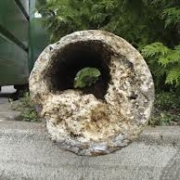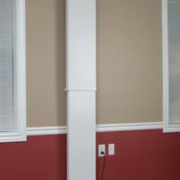Health Hazards Of Mold Exposure – Atlanta, GA
Health Hazards of Mold Exposure
Mold is actually a type of fungus that can grow either indoors or outdoors. There are several different types of mold which can grow, but most thrive in warm, damp environments. As people are exposed to mold, whether knowingly or not, they can suffer some severe hazards to their health. It’s important to note that children, the elderly and pregnant women are especially susceptible to these effects. Some of the health hazards of mold exposure include:
- Allergic reactions: Some people with mold allergies or heightened sensitivity to mold can experience itchy eyes, a runny nose, coughing , wheezing, skin irritation, headache or fatigue. People with severe allergies may experience a fever or shortness of breath. Some people may even develop an allergy to mold after prolonged exposure.
- Asthmatic episodes: Individuals who have asthma often find that their asthmatic symptoms are exacerbated by exposure to mold. This may include difficulty breathing and tightness in the chest. Sometimes being in an area with mold can trigger an asthma attack as well.
- Sinus infections: People who are exposed to mold on a regular basis are more likely to develop chronic sinus infections over time.
- Fungal infection: Since mold is a fungus, it can lead to a specific type of fungal infection called mycosis. This infection often occurs in the digestive tract or sinuses, though it does sometimes occur in the lungs. Individuals who already have a compromised immune system, such as people with HIV or AIDS , or people who are receiving chemotherapy, are especially susceptible to these fungal infections caused by mold.
- Respiratory illness: According to the CDC, exposure to indoor mold may lead to an increased risk for respiratory illness in children who are otherwise healthy.
- Mycotoxin toxicity: Molds give off a type of toxin compound known as mycotoxins. People who are exposed to very high levels of mycotoxins on a regular basis may, over time, experience mycotoxin toxicity, which can be extremely harmful or even deadly. Symptoms like stuffy nose, irritated eyes and skin, cough, sore throat, shortness of breath, headache and nose bleeds are some of the warning signs of this condition.
How to Remove Mold
No matter what type of mold is found in your home, you should immediately take steps to begin removing it in order to reduce your risk for the health hazards described above. In mild cases of mold, such as in a refrigerator or on countertops, use a non-ammonia soap or detergent to scrub the surfaces of any place in and around where the mold has been located. Wear a mask over your nose and mouth to reduce the exposure to mold spores during the removal. For anything more than a very contained incidence of mold, however, professional mold removal crews should be hired to remove the mold in a thorough and safe manner. Check your local listings to find mold removal experts in your area.
Mold Prevention
Removing existing mold from your home is a great place to start, but that doesn’t mean that it can’t come back or pop up in new places. Fortunately, there are several easy steps you can take to prevent the growth of mold in your home. Some ways to prevent mold include:
- Take wet clothes out of the washing machine as soon as the load is finished.
- Use dehumidifiers in damp areas of the home, such as the basement.
- Clean out your dehumidifiers and humidifiers at least once a week.
- Use mold-killing cleaning products in your shower and bathroom regularly.
- Don’t have too many live, indoor plants since mold can grow in soil.
- Get rid of any excess moisture sources, such as leaks.
- Throw out moldy foods in an outdoor bin instead of using your kitchen trash can.




